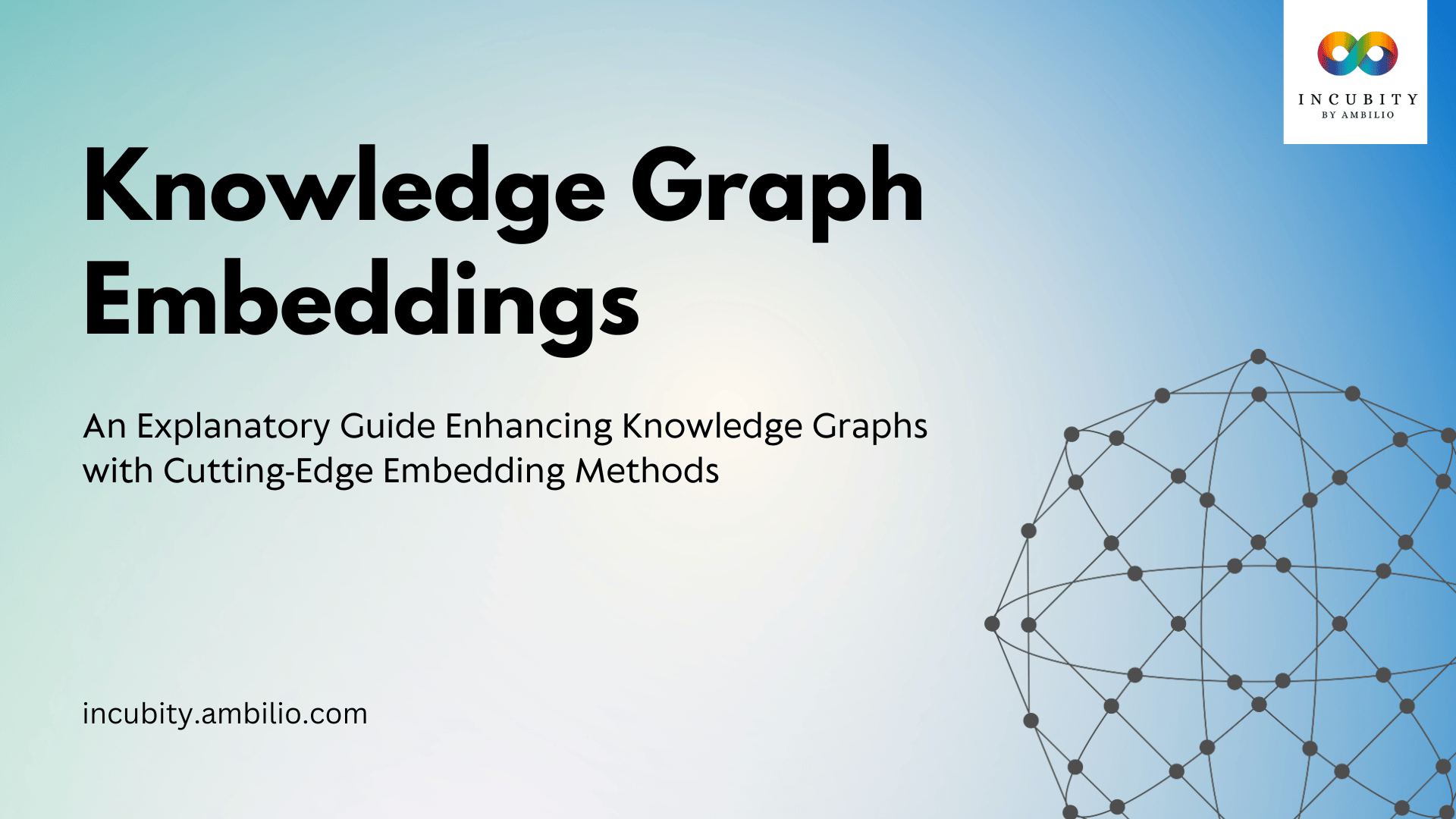Knowledge graphs are large-scale, structured repositories of information that consist of entities and their relationships. Knowledge graph embeddings are a crucial technique used to represent these entities and relationships as dense vectors in a high-dimensional space, enabling efficient and scalable inference in large knowledge graphs. This article provides a comprehensive overview of knowledge graph embeddings, focusing on the two main branches of knowledge graph embedding design: distance-based methods and semantic matching-based methods.
Overview of Knowledge Graph Embeddings
Knowledge graphs serve as extensive, structured databases containing entities and the relationships between them. Knowledge graph embedding is a technique that translates these entities and relationships into dense vectors within a high-dimensional space. The primary objective of knowledge graph embedding is to learn vector representations that encapsulate the semantic meaning of entities and relationships, thereby facilitating accurate link prediction and other downstream tasks. This method significantly enhances the efficiency and scalability of inference processes within large knowledge graphs.
Distance-Based Methods
Distance-based methods for knowledge graph embedding focus on modeling the geometric relationships between entities and relationships in the vector space. These methods typically define a distance metric between entities and relationships and then optimize the vector representations to minimize this distance. Several notable distance-based methods include:
- TransE: TransE is a widely-used distance-based method that represents entities and relationships as vectors in a shared space. It employs a translation-based approach, where the vector difference between two entities encapsulates the relationship between them. This method effectively models one-to-one relationships but may struggle with complex patterns.
- DistMult: DistMult is another prominent distance-based method that utilizes a dot product to model relationships between entities. It represents both entities and relationships as vectors and measures their similarity using a distance metric. DistMult is particularly effective for symmetric relationships but faces limitations with asymmetric ones.
- Holographic Embeddings: Holographic embeddings combine translation and rotation operations to model relationships between entities. Inspired by the concept of holography, where a three-dimensional image is encoded on a two-dimensional surface, this method provides a nuanced approach to capturing complex relational patterns in knowledge graphs.
Semantic Matching-Based Methods
Semantic matching-based methods for knowledge graph embedding focus on modeling the semantic relationships between entities and relationships using various semantic matching techniques. These methods define a semantic matching function between entities and relationships and then optimize the vector representations to maximize this function. Key semantic matching-based methods include:
- TransR: TransR is a semantic matching-based method that uses a translation-based approach to model relationships. It represents entities and relationships as vectors and employs a semantic matching function to measure their similarity. TransR enhances the modeling of multi-relational data by allowing entities to have distinct representations in different relational spaces.
- TransH: TransH is another semantic matching-based method that builds on the translation approach to model relationships. It represents entities and relationships as vectors and uses a hyperplane to project entities, enabling the method to capture diverse relationship patterns. This approach is effective for handling one-to-many and many-to-many relationships.
- Compositional Embeddings: Compositional embeddings combine semantic matching with composition operations to model relationships between entities. Drawing inspiration from compositional semantics, where the meaning of a phrase is derived from its constituent parts, this method integrates the meanings of entities and relationships to form comprehensive vector representations.
Emerging Trends and Future Directions
Emerging trends and future directions in knowledge graph embedding research include:
- Pre-trained Language Models (PLMs): The integration of PLMs with knowledge graph embedding methods has shown promise in improving link prediction accuracy and other downstream tasks. PLMs provide textual descriptions of entities and relationships, enhancing semantic matching capabilities and offering richer contextual understanding.
- Compound Embeddings: Compound embeddings merge distance-based and semantic matching-based methods to model relationships between entities. This hybrid approach leverages the strengths of both methodologies, resulting in improved accuracy for link prediction and other applications.
- Explainable AI: Explainability in knowledge graph embedding research is crucial for building trust in AI systems. The ability to interpret and understand learned vector representations enhances transparency. Techniques such as attention mechanisms and saliency maps aid in explaining the inner workings of knowledge graph embedding models.
Final Words
This article provides a comprehensive overview of the current state of research in knowledge graph embedding for link prediction and various downstream tasks. The discussion covers the two main branches of knowledge graph embedding design: distance-based methods and semantic matching-based methods. By exploring the connections between recently proposed models, the article outlines underlying trends that can guide researchers in developing novel and more effective models. Additionally, it highlights emerging trends and future directions in knowledge graph embedding research, including the integration of pre-trained language models and the importance of explainability. These advancements are set to significantly enhance the capabilities and applications of knowledge graph embeddings in the future.



